In the Brasileiro Série A 2019, Cruzeiro saw their worst nightmare become reality. The Belo Horizonte giants were relegated to Série B after a disastrous campaign. Two seasons later, they are still trying to find their way back to glory after failing to reach promotion for two consecutive years. More shockingly, though, they found themselves in the Série B relegation zone for a brief spell in 2021. It is fair to say the many years of financial and sporting mismanagement has caught up to them. However, in December 2021, Cruzeiro fans gained a reason to have hope again. Real Madrid and Brazil legend, Ronaldo, bought his boyhood club with a promise to take them back to the top.
From financial to sporting duties, Ronaldo and his team have been very busy for the past three months. One of the first decisions of the new ownership was to appoint a new manager. They have gone with the promising 38-year-old Paulo Pezzolano, despite only having five years of managerial experience. Only three months in, the Uruguayan has already drastically improved Cruzeiro’s performances.
In this tactical analysis, we will examine the defining characteristics of Pezzolano’s tactics at Cruzeiro. Through statistical and tactical analysis, we will be able to identify what has changed for the fallen giants and how they have performed so far.
Statistical overview
Data in football is able to describe a team’s approach to the game. Patterns in their behaviour can be found through a quick data analysis. Additionally, data will also tell us how effective the approach taken is. Key metrics in football are able to indicate whether performance has generally been good or bad. Cruzeiro’s case is no different.
Cruzeiro’s 59.73% average possession since appointing Pezzolano highlights his controlled approach to the attacking phase. He likes his teams to dominate the game through control of the ball. In addition, attacks are controlled and organised. A pass-first approach can also be seen by the fact that they average the fourth-lowest number of 1v1s and dribbling per 90 in the Mineiro (20.99). Their area of focus in attack is also demonstrated by their league-leading 19.03 crosses per 90. Other key statistics show a high tempo game due to a high passing rate (13.8 passes per minute of possession), and an organised approach to progressing through the zones with a league-leading 75.54 progressive passes per 90.
Defensively, a few patterns are also noticeable. Cruzeiro average the least amount of defensive duels per 90 and interceptions per 90. This very minimal amount of defending can be attributed to their possession-based approach, where they have the ball for long periods of time. A 7.1 PPDA shows the emphasis on recovering the ball back as soon as possible. In summary, we are able to identify a few patterns in Cruzeiro’s approach through data.
Finally, the drastic improvement in performance can be seen by comparing their current metrics to last year’s. This season under Pezzolano, Cruzeiro have averaged 2.3 goals per 90 compared to 1.02 from last season. While they are currently overperforming their xG per 90 (1.86), it is still better than last year’s 1.31. Additionally, they are currently averaging about the same amount of shots per 90 as last season. This highlights the improvement in the quality of chances created – 0.143 xG/shot vs 0.093 xG/shot.
Lineups
In the first few matches, Pezzolano constantly rotated the team as he was still getting to know the players. More recently, he has settled on a few key players. The back four is fairly consistent with Rômulo, Lucas Oliveira, Eduardo Brock, and Rafael Santos. Willian is usually the first choice as the single pivot. Canesin, Machado, and João Pedro have rotated between themselves for the two centre-midfielders. Upfront, Pezzolano is still constantly rotating and giving opportunities to youngsters.
As far as formations, Pezzolano’s favourite system is the 4-3-3. However, he has also used the 4-1-4-1 at times. In the last five matches, he has used the 4-3-3 75% of the time compared to 25% of 4-1-4-1. Key metrics during both of these formations can be seen below. Note it is only for the last five matches.
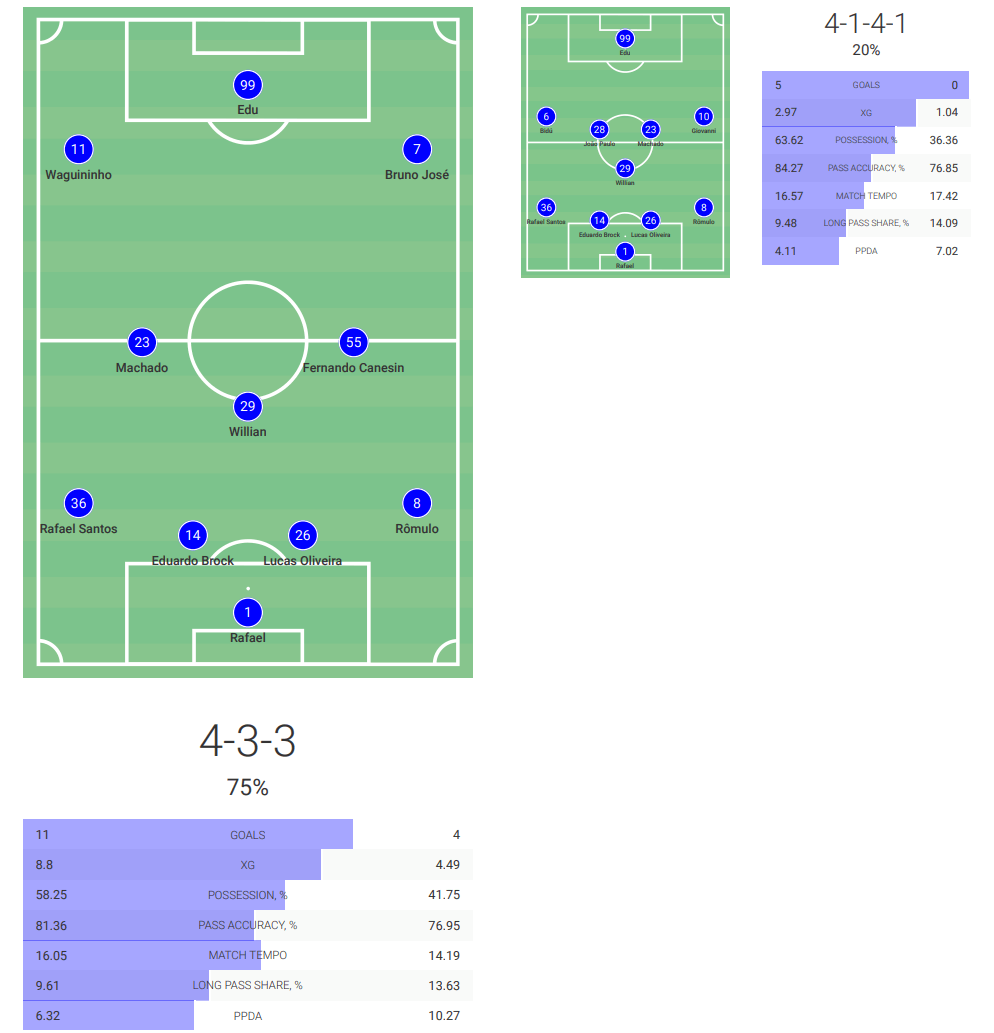
Controlled approach
As we have seen in a brief statistical overview, Pezzolano’s Cruzeiro likes to attack in a very controlled manner. They look to progress through the zones with maximum control of the ball, key spaces, and more. They are also patient with the ball and do not force passes. As a consequence, they have averaged 450.15 passes per 90 and 59.73% possession. In order for this rather patient approach to work, they must be very organised. Cruzeiro will often look to organise themselves while the centre-backs pass laterally. A pass map of their lateral passes in one of the matches can be used to illustrate this. The link between the two centre-backs is very thick, highlighting the constant back and forth passing to allow the team to get organised.
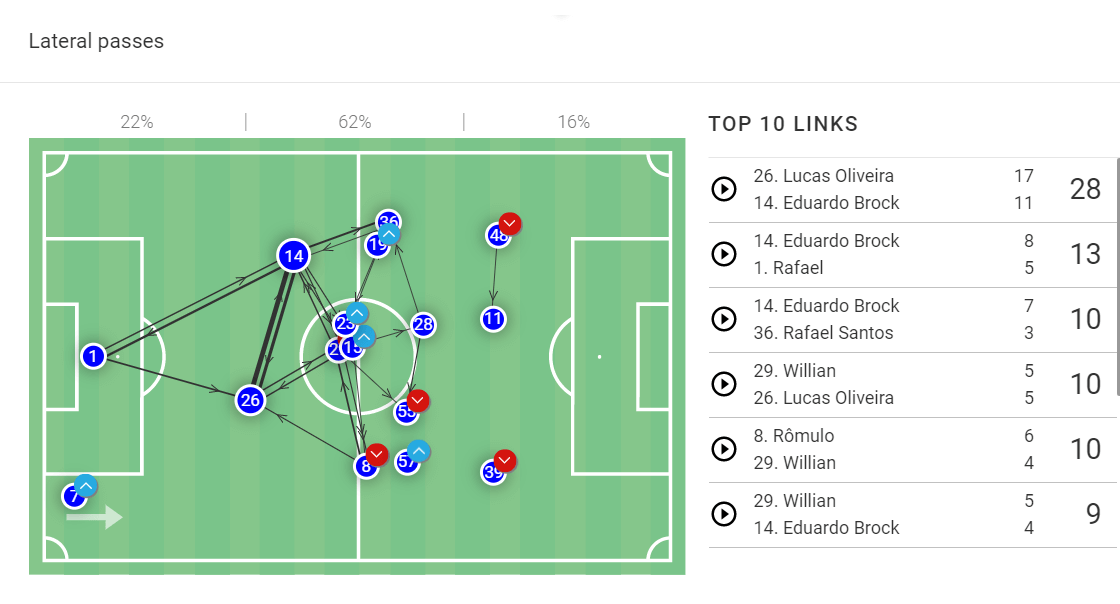
The very low amount of dribbling highlights a pass-first mentality, where players look to retain possession and collectively progress through the zones. The map below illustrates their successful dribbles in the final third from the last five matches. They are very scattered and minimal, showing there is no intentional pattern.
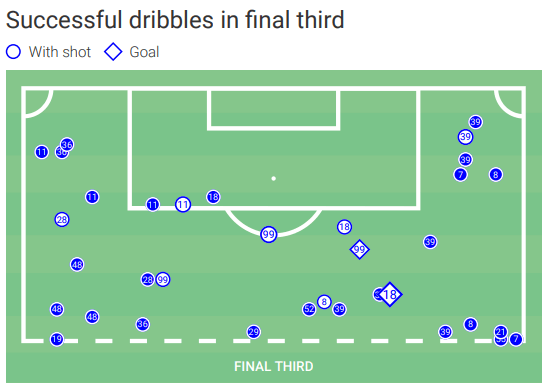
Organisationally, there are also patterns within Cruzeiro’s approach. In possession, they constantly look to build with a back three. Most commonly, this will be done by the defensive midfielder dropping in between the centre-backs. It can also be done by the right-back tucking inside to become the third centre-back. Alternatively, a ball-playing midfielder such as Canesin can drop to be the third player. It is all dependent on the situation at hand.
This approach has been chosen because of the support it provides in wide areas, both in and out of possession. It allows wide players to push high with a wide centre-back still in a position to provide cover in transition. Additionally, it allows them to combine and create numerical superiority in wide areas with the ball.
In the example below, the defensive midfielder drops in between the centre-backs. The right-back drifts inside to play in the midfield while the right-winger maintains width. On the other side, the left-back pushes wide and high while the left-winger tucks inside. This is one of many variations possible for Cruzeiro.
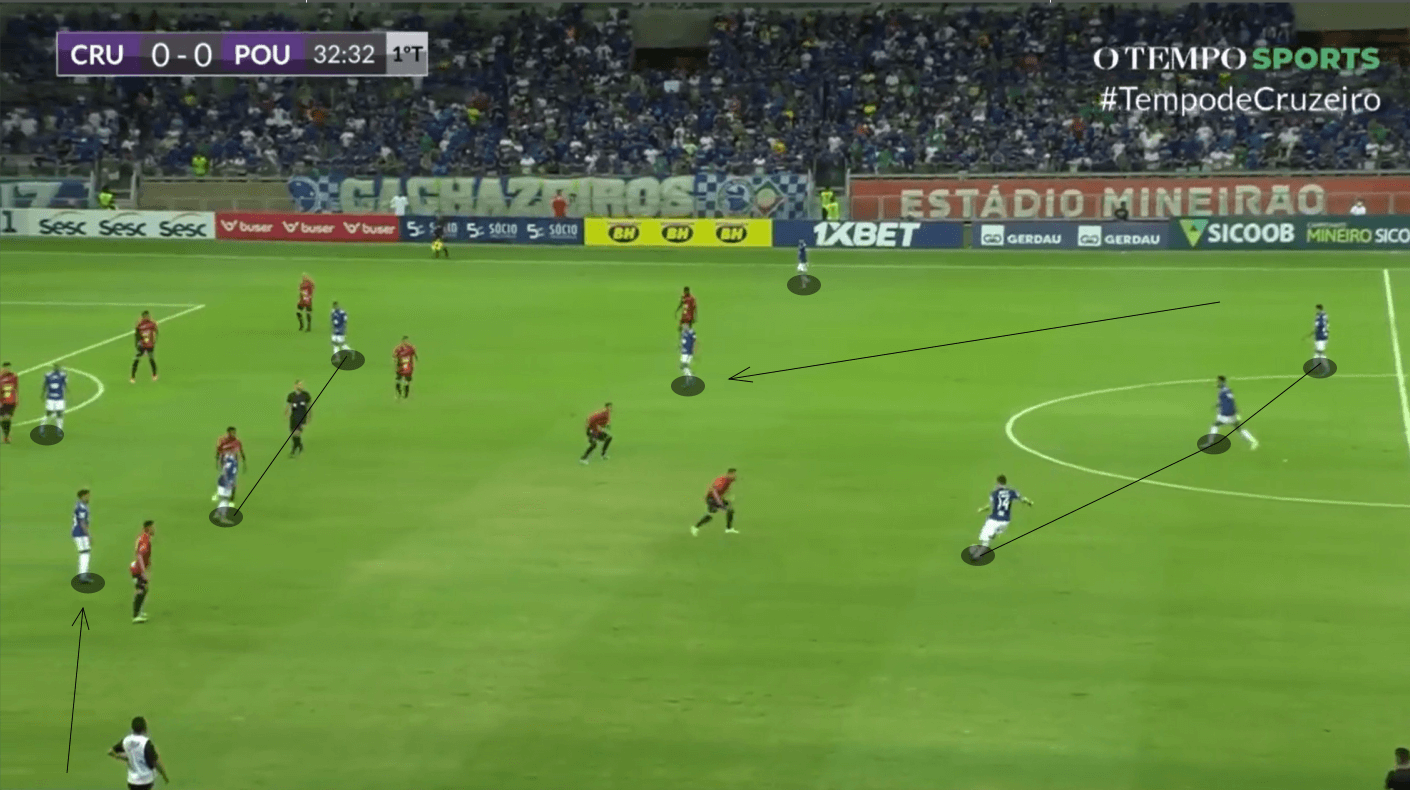
Another variation is the centre-midfielder, Canesin, dropping in to be that third centre-back. He is a very technical player who can provide a lot of support in possession. It all depends on the current situation and the characteristics of the players involved.
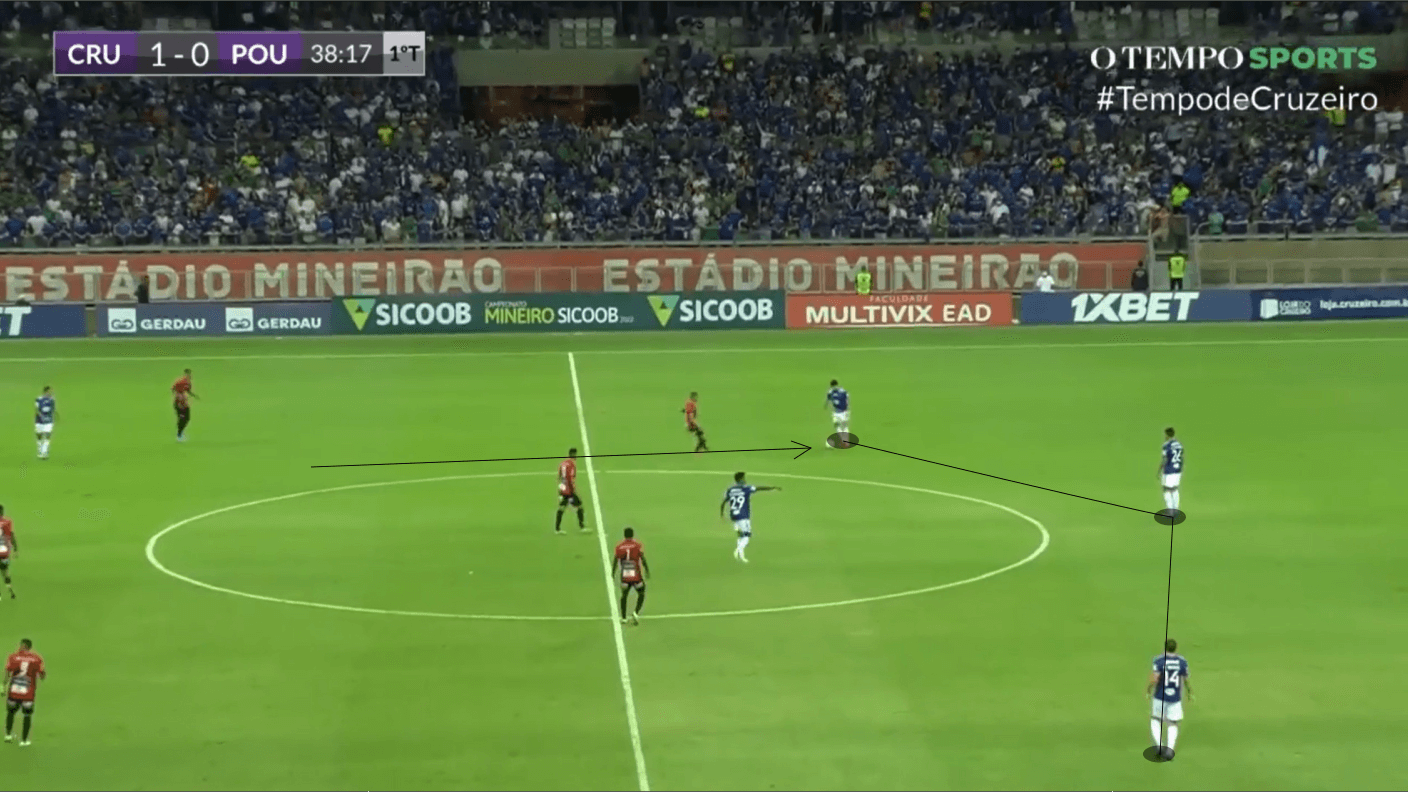
Another consistent organisational aim for Cruzeiro in possession is to form a double pivot. A double pivot is most commonly used by teams attempting to focus their area of attack in wide areas as it allows players to provide support on both sides.
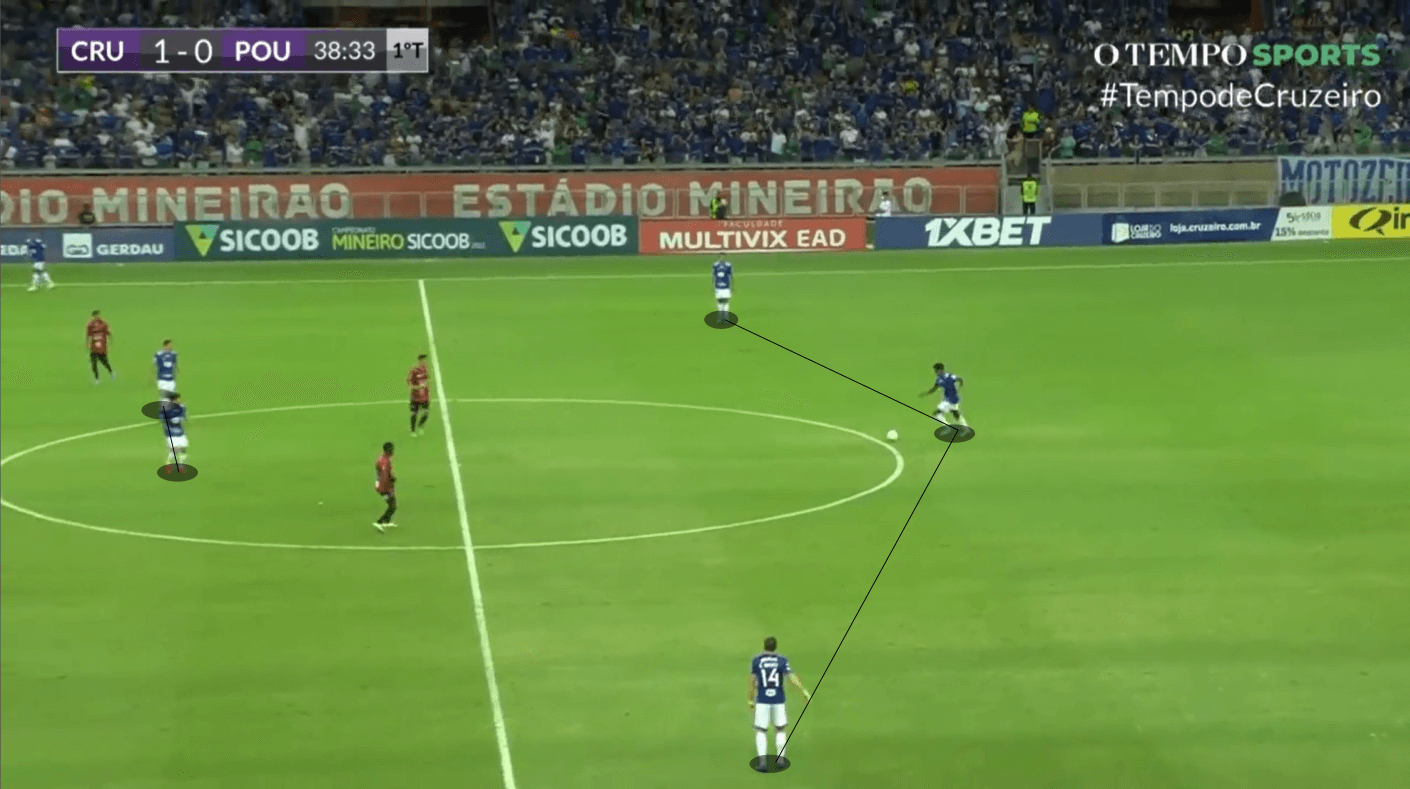
The overall aim of their setup is to attack through the wings. This is done through either overloads or combinations in wide areas. The wide centre-back is usually joined by one of the pivots, the fullback, and the winger. Of course, not all four players will be positioned there at all times. However, they are often able to provide support and create in these areas. Below is an example of them creating numerical superiority (4v3) on the wing.

In addition to attacking through the wings, the centre-backs will also look to break lines. Cruzeiro lead the Mineiro in progressive passes per 90, and the centre-backs play a significant role in this. In the image below, Brock is able to find the centre-forward by breaking two defensive lines and moving significantly closer to the goal.
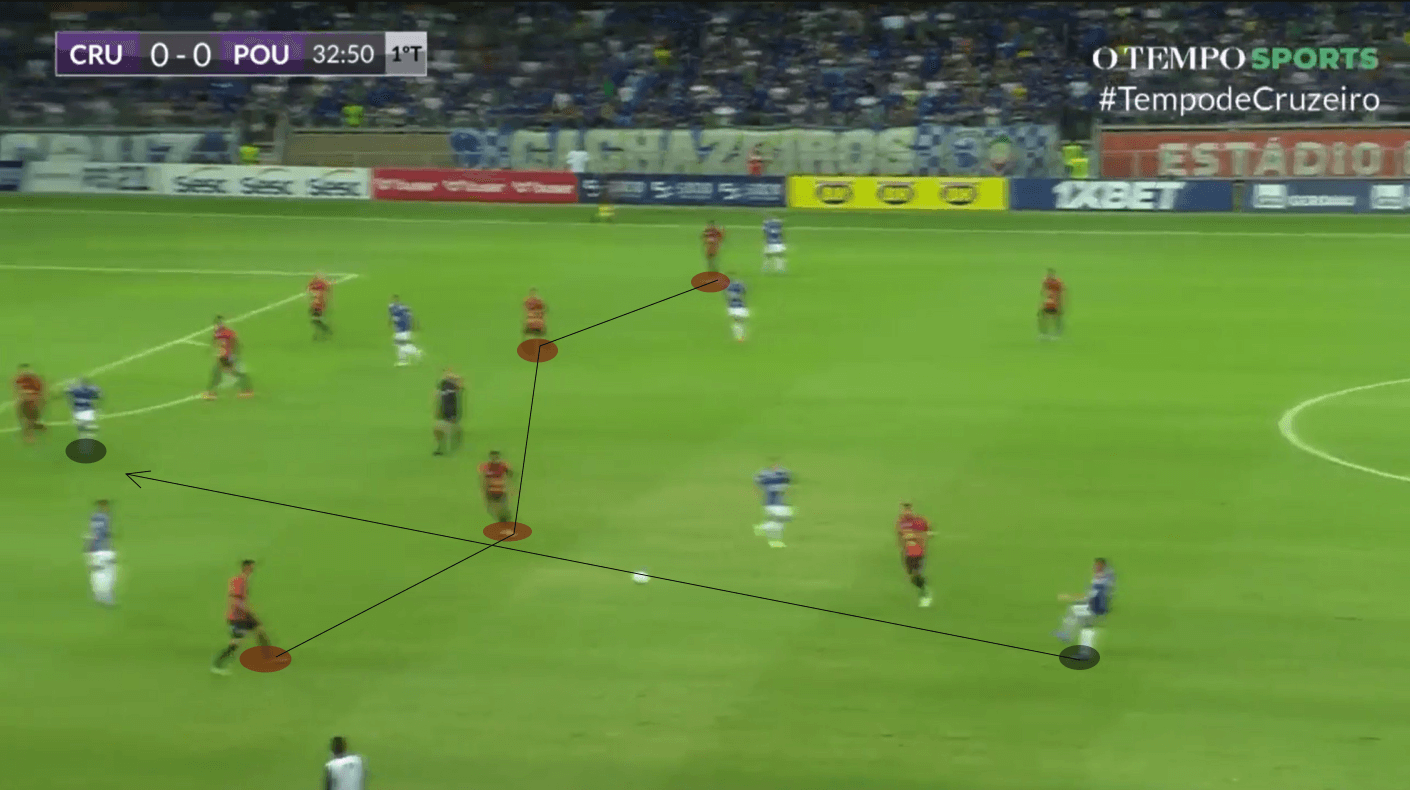
Creating through the wings
Cruzeiro’s emphasis on attacking through the wings is very noticeable, especially in the final third. More specifically, there is a clear focus on attacking through the left side. It is something that will be soon noticed and nullified by oppositions, so they must work on becoming more dynamic. At any rate, this left-sided focus begins with a general pass map. Notice how thick the links are on the left compared to the right.
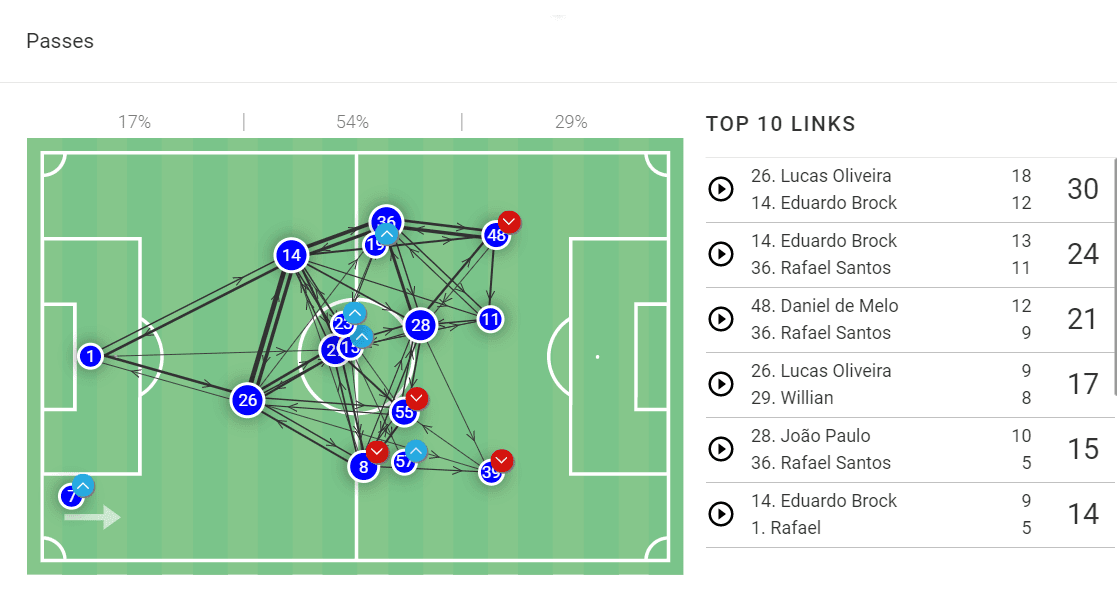
It is even more noticeable in the map of forward passes. Nearly all of the passing links are on the left, especially amongst more advanced players.
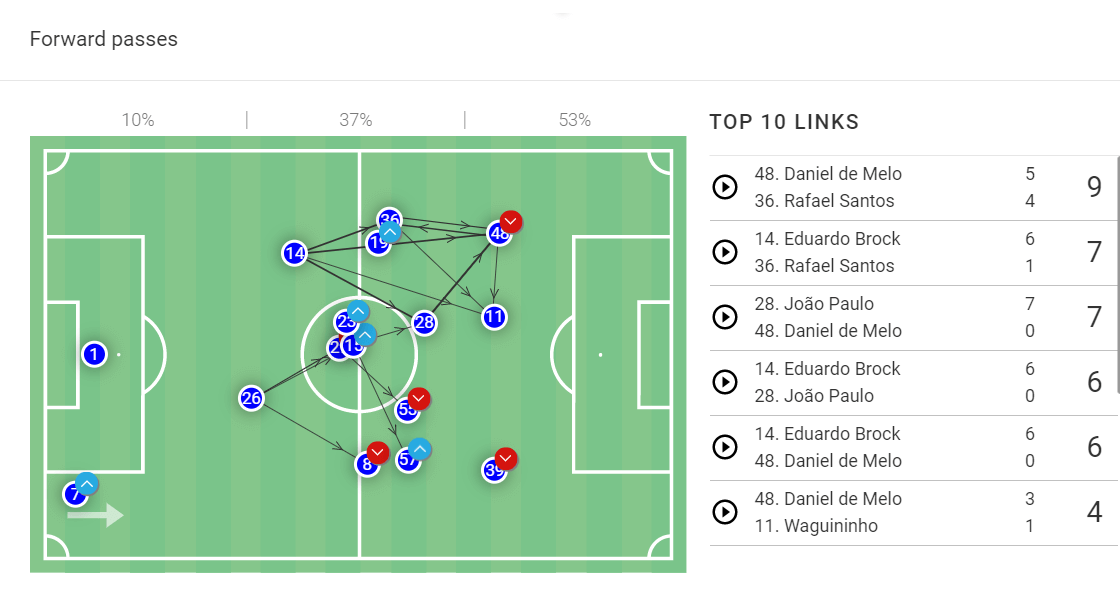
Cruzeiro are constantly attempting to combine in these areas. There are a few patterns and movements that are very consistent. The most common is the linkup between the left-back and the left-winger. This is done in a very fast and effective way, making it difficult for defences to react. The left-sided wide centre-back will usually drift into the wings to create and begin combinations there. In the instance below, he finds the left-winger further down the line.
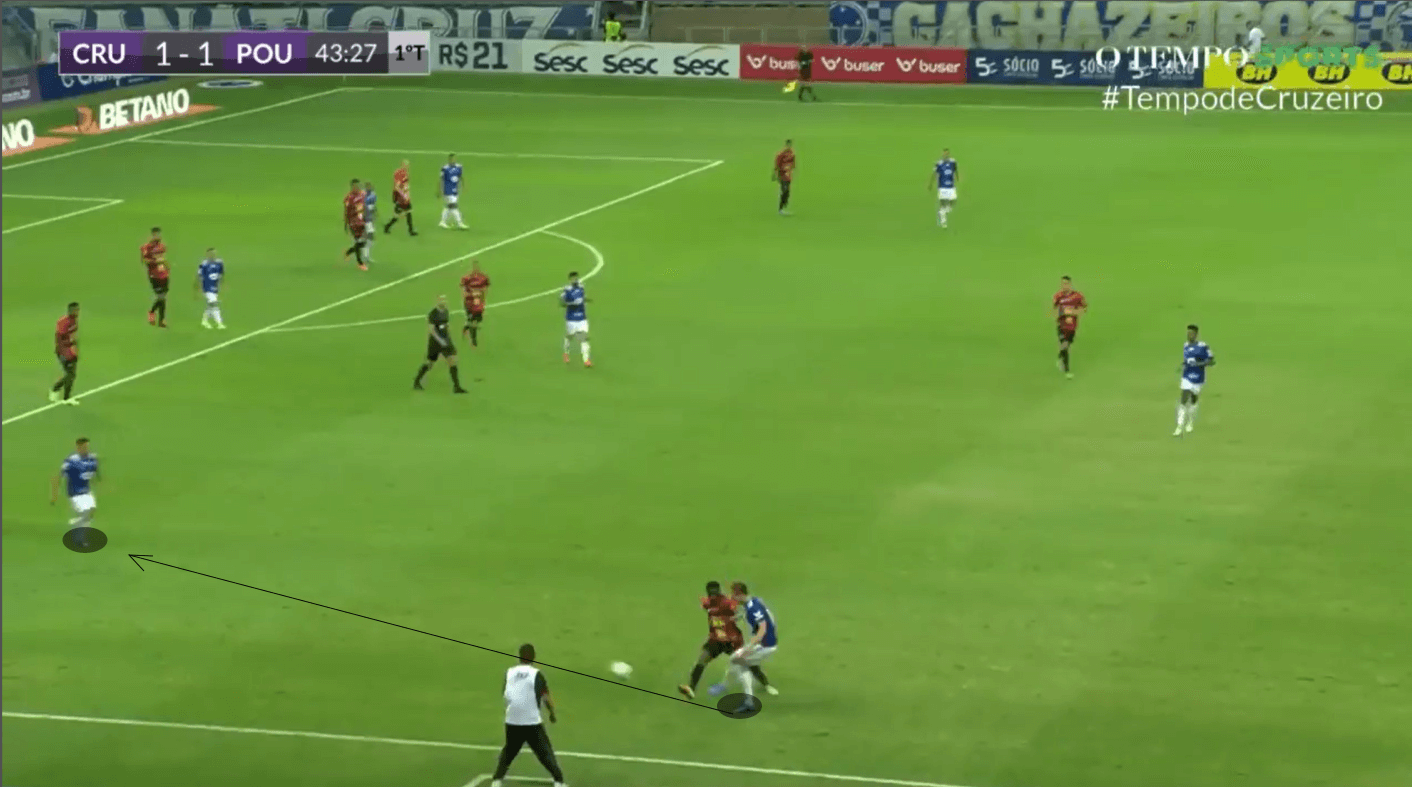
The left-winger plays a quick first-time pass for the left-back who is even further wide. This quick one-touch combination is very hard to defend if not prepared, and they are successful in advancing to a more dangerous area.
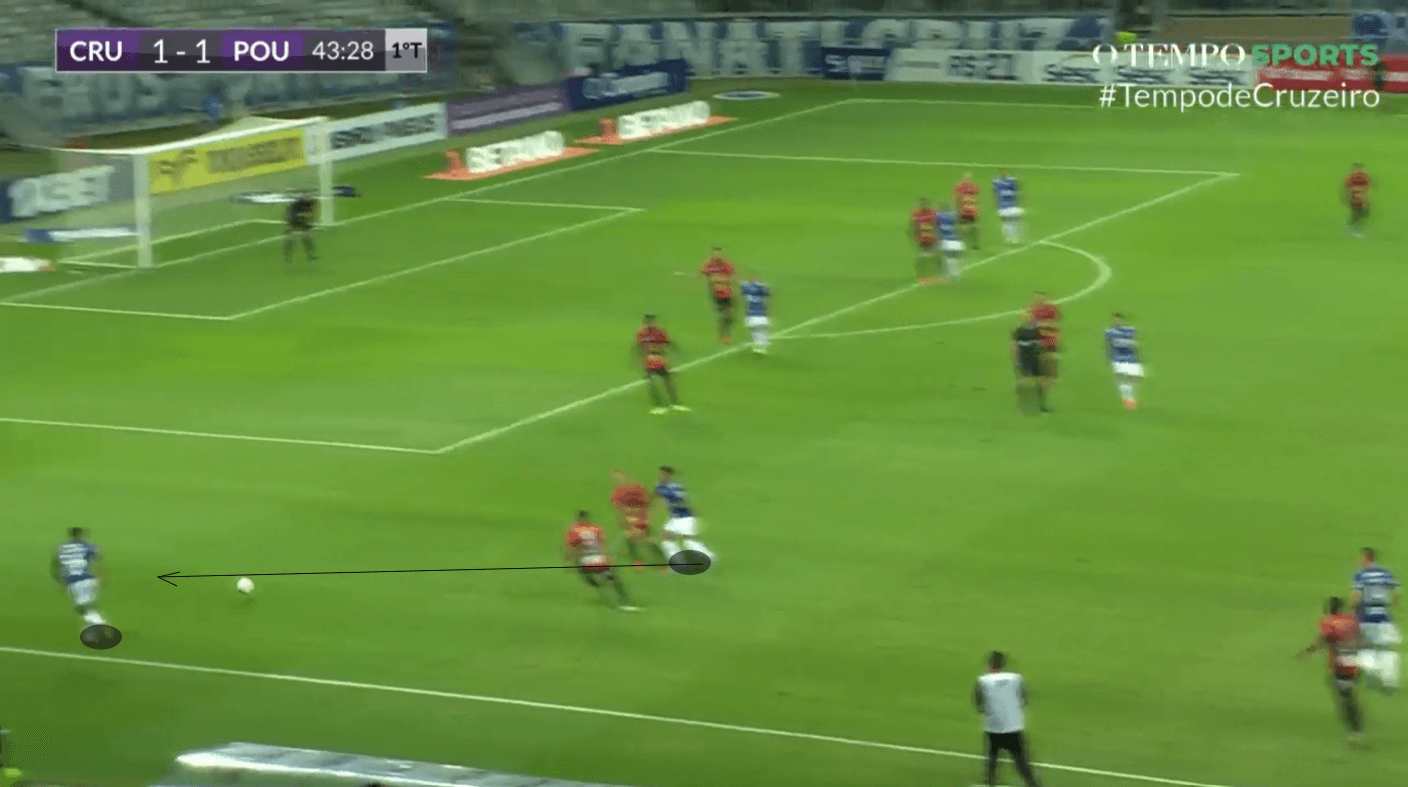
In a different match, they performed a very similar combination. This time, the centre-forward dropped in to receive a pass from the centre-back. He passes it wide with a first-time pass for the left-winger. It is a very effective and simple way to progress through the zones and get into dangerous areas.
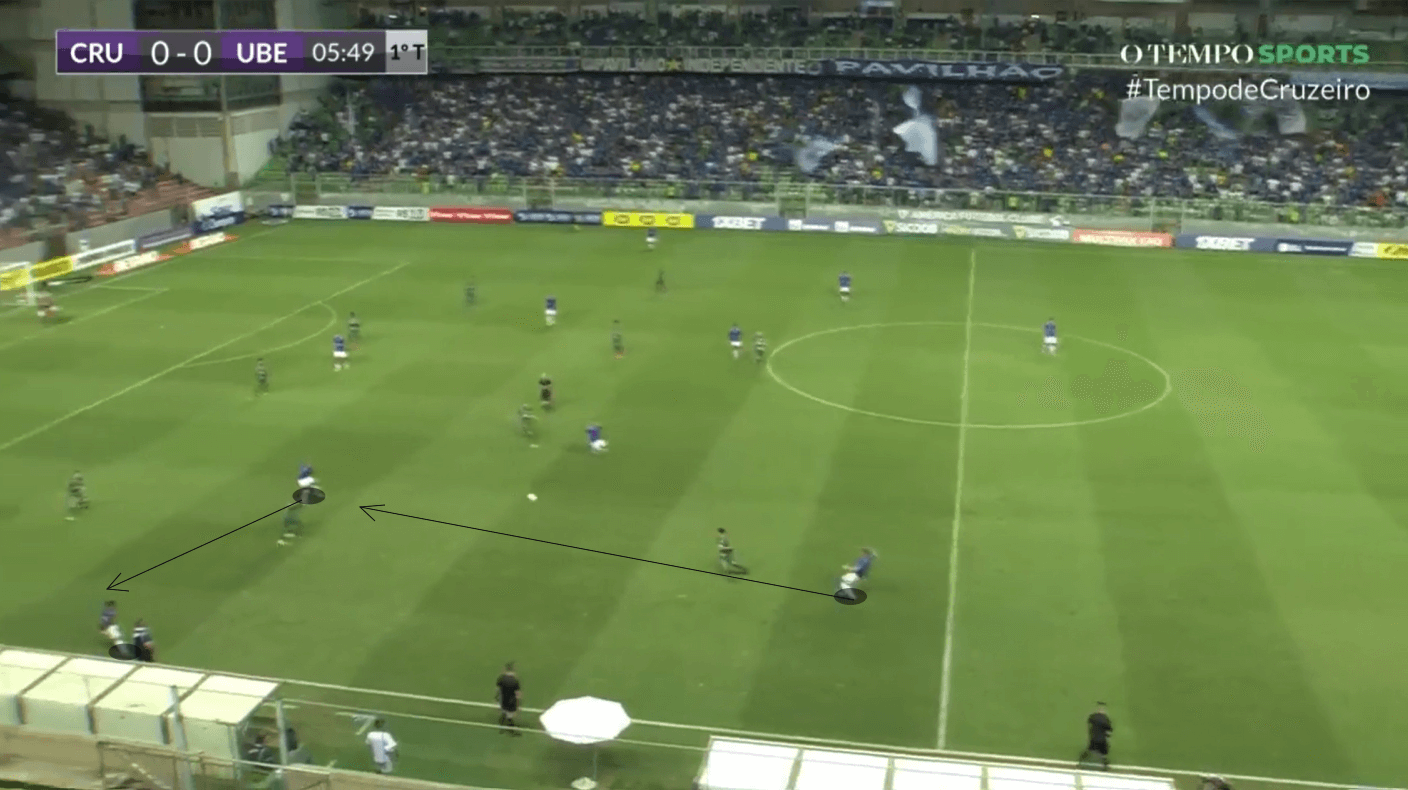
As they advanced into the final third, the same approach is taken. They are very effective in getting into dangerous areas in the wing, so the majority of their chances are created through crosses. The map of crosses in the last five matches highlight the number of crosses delivered. It also highlights the focus on the left side as discussed before.
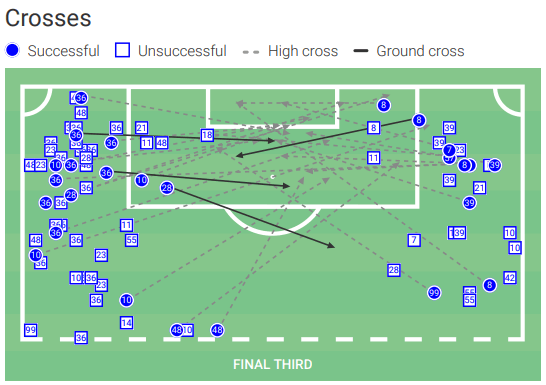
Not only are they able to get into good positions for crossing, but they also get a lot of players into the box. In the instance below, there are four players running into the box, making it very difficult to defend the cross.
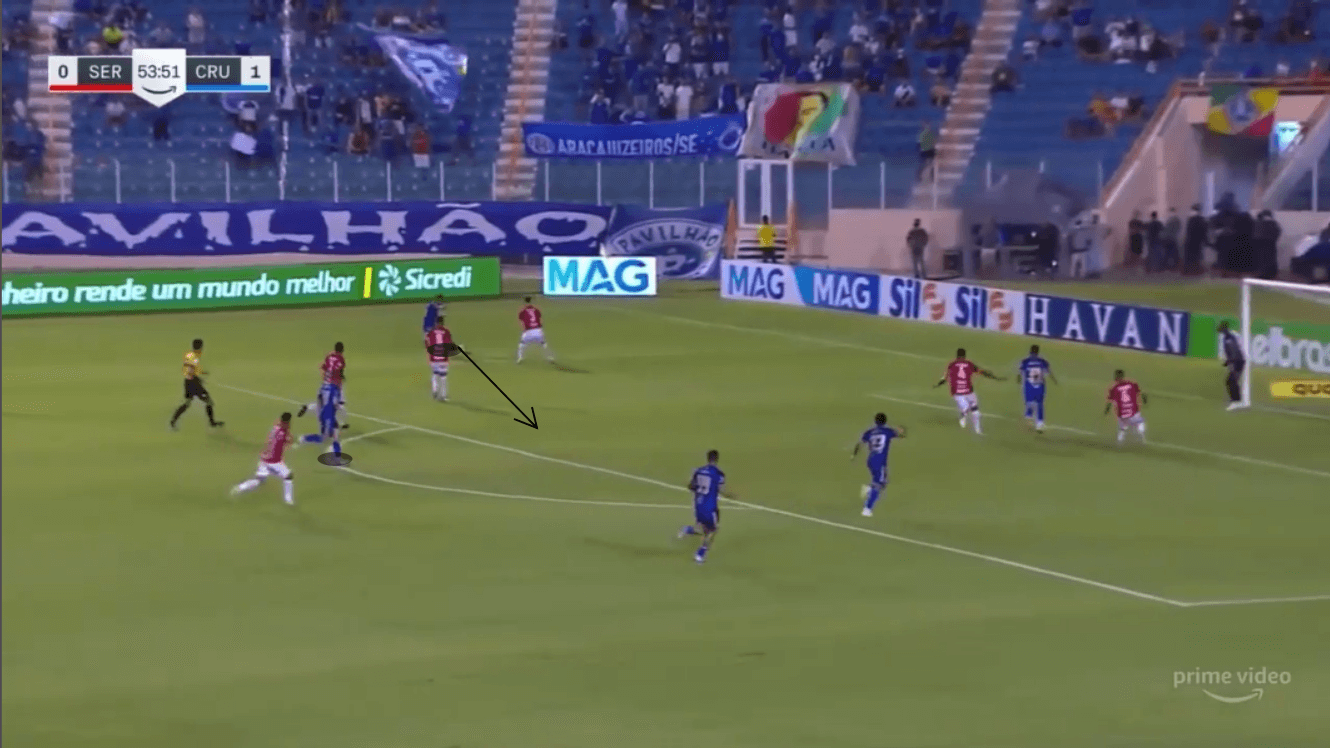
Cruzeiro’s wide players are also very good at crossing the ball. Below, the wide player delivers a very good cross into the back post where the forward is able to finish with ease.
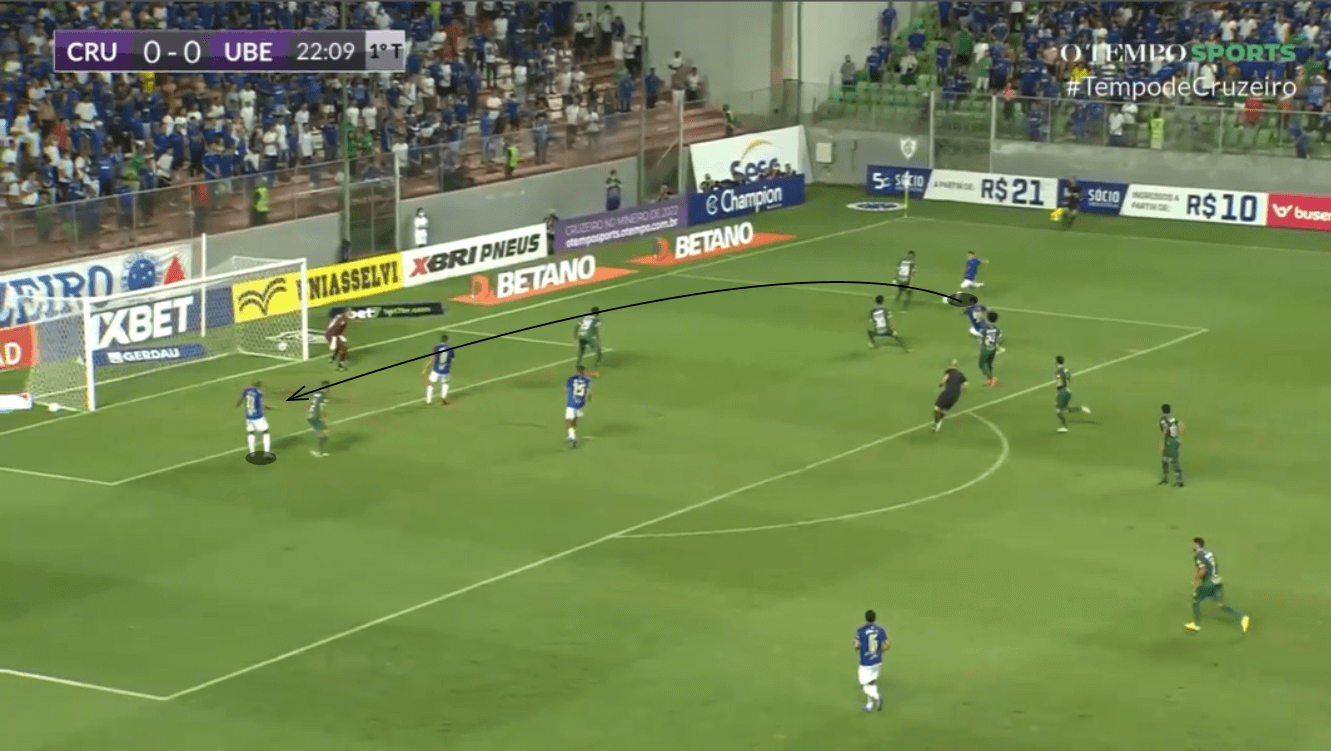
Their shot map for the last five matches shows they are able to create a high number of chances in optimal areas.
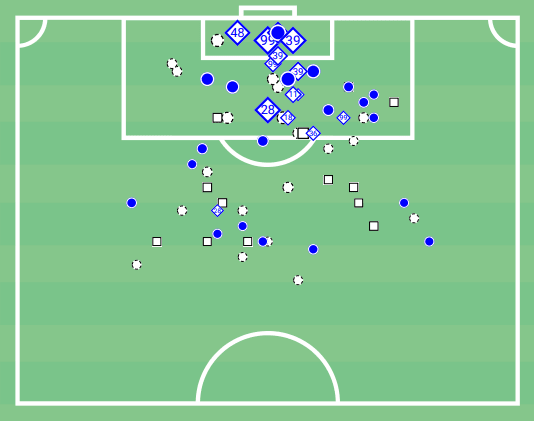
Defensive behaviour
Cruzeiro’s approach out of possession is consistent with the other phases of the game. They wish to have the ball, so they look to recover it as soon as possible. As a consequence, they have put together an impressive PPDA of 7.1. They look to press their opponents very high and intensively out of possession. More specifically, Pezzolano has adopted an adaptive, man-marking approach.
Cruzeiro’s high-press is very man-oriented, looking to close down every near pass option available. To do this, they will often change their structure in accordance with the opposition. In the example below, they have shifted over and every player near the ball is marking a man. As the play progresses, they will remain with their man.
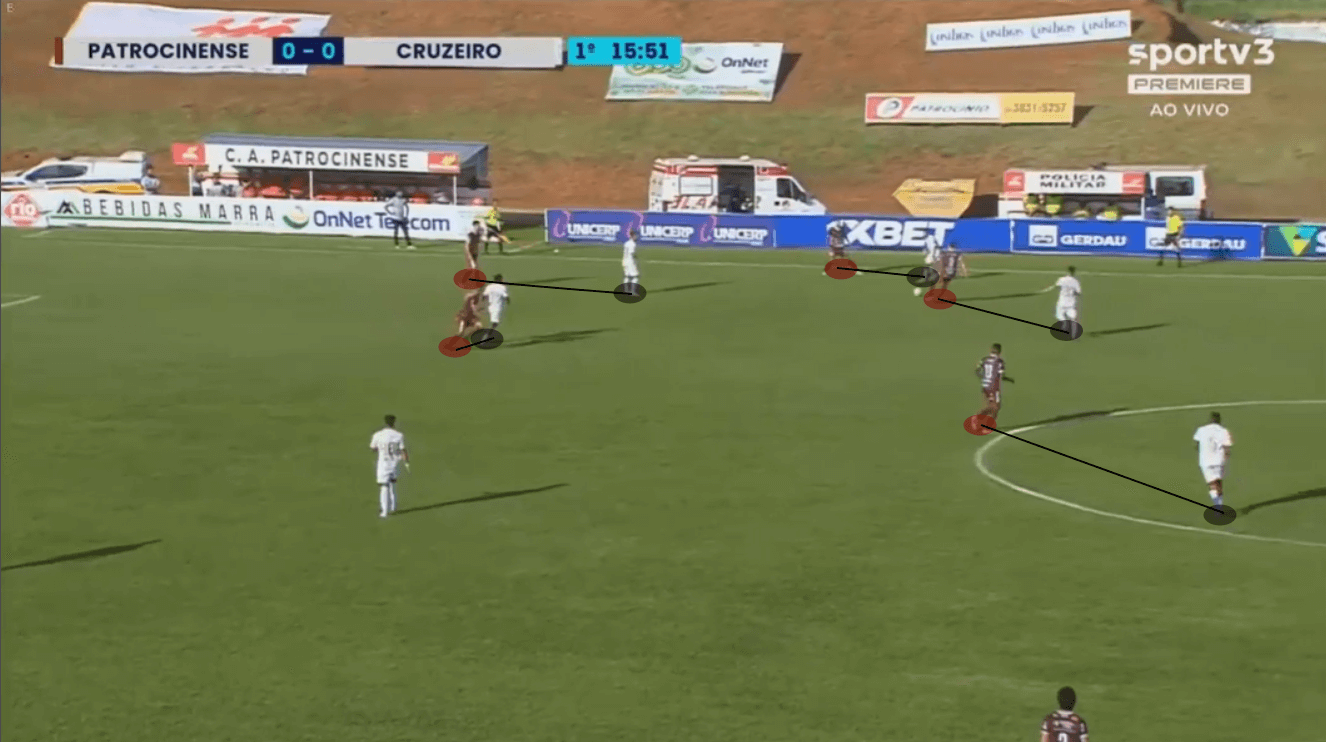
More advanced, they maintain a similar approach against Democratas. As they look to build up through the right, Cruzeiro shifts over to that side. Each player finds their own man which they follow around during this press. The fullbacks are usually very aggressive in this phase, pushing high to press.
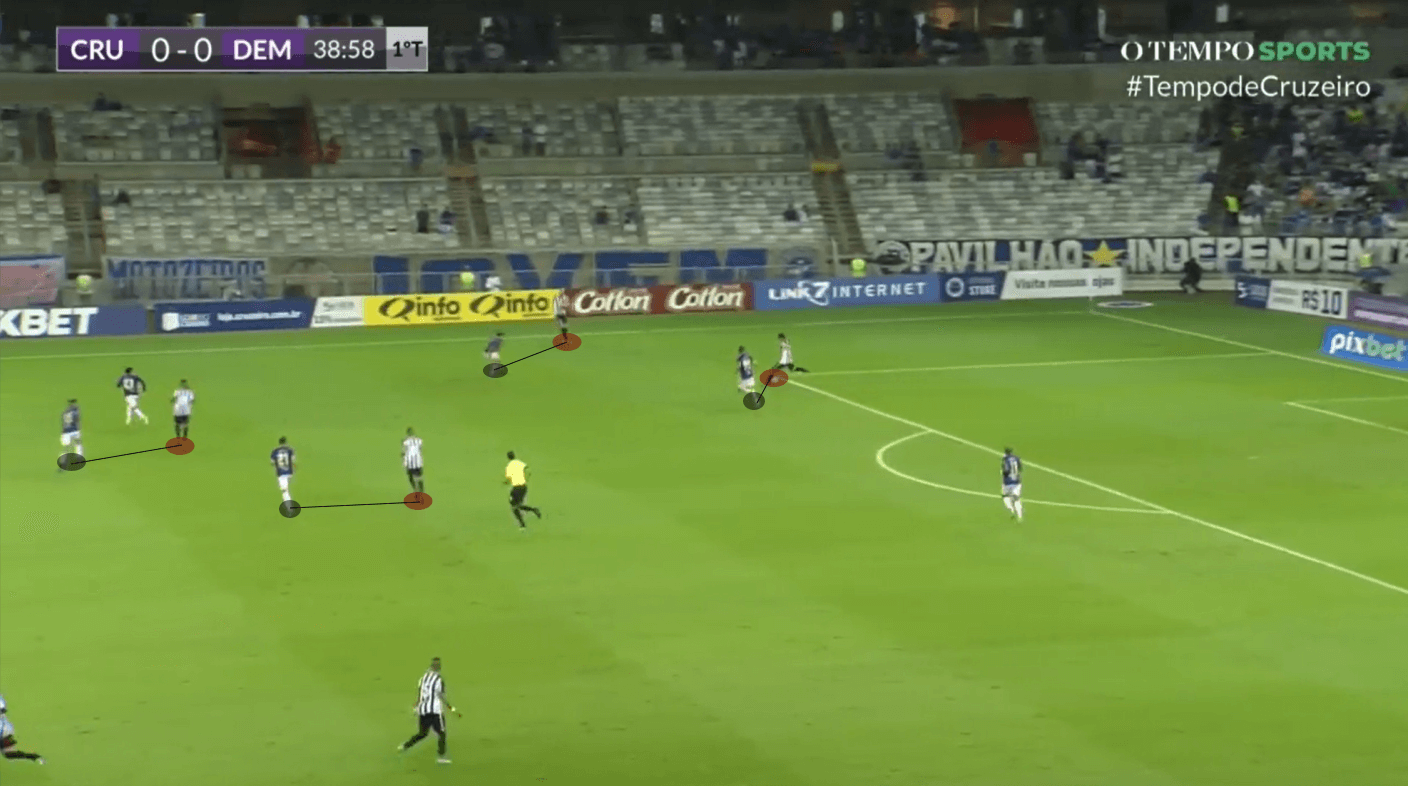
Finally, the map of recoveries in the final third over the last five matches highlight their high press. They will win the ball back in the opposition’s third with frequency, and they are often able to create chances from it as well.
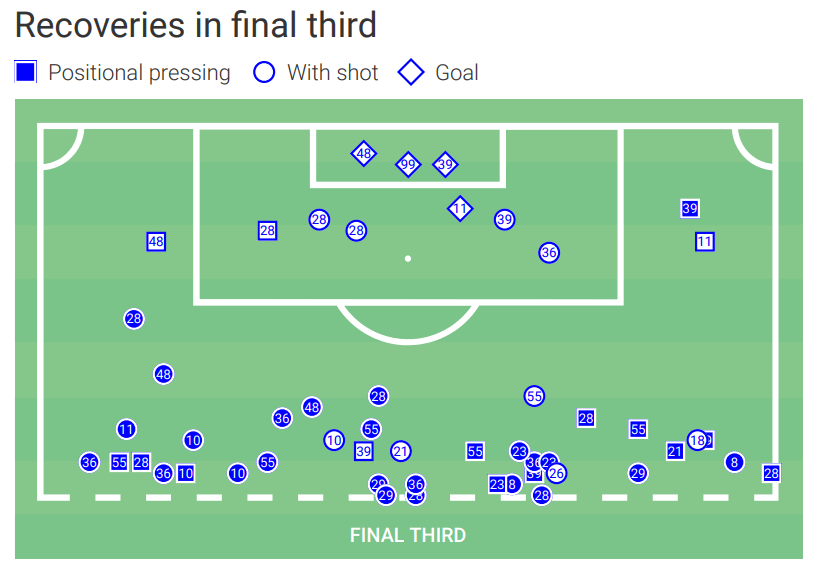
Conclusion
Pezzolano’s tactics at Cruzeiro have been very clear, despite it still being early days. He wants his team to dominate possession and adopt a pass-first mentality. Attacking through the wings in a controlled manner is an essential part of their strategy. Their structural organisation in possession allows them to maximise this approach. Out of possession, they have adopted a very intense high press approach. As we have seen in the statistical overview, metrics not only confirm this but show it has been effective. Pezzolano has a very difficult job on his hands as he will try to get Cruzeiro back to the first division. Now with a football legend like Ronaldo in charge of the club, all eyes will be on them for the 2022 season.





Comments